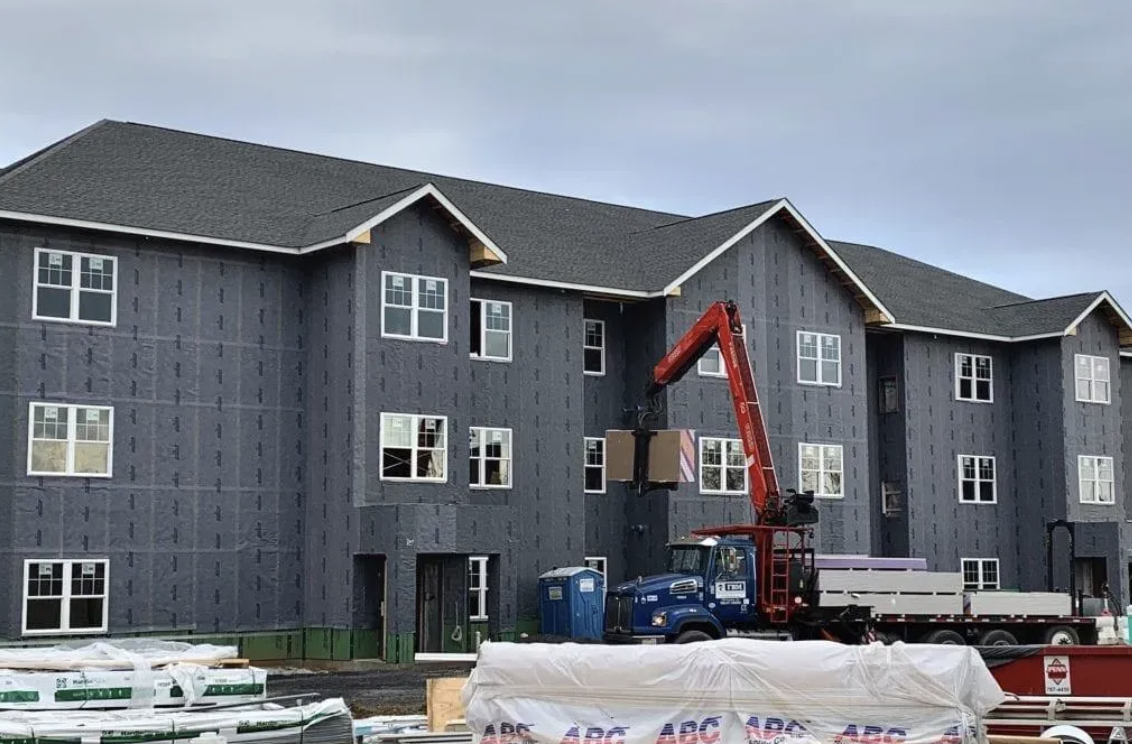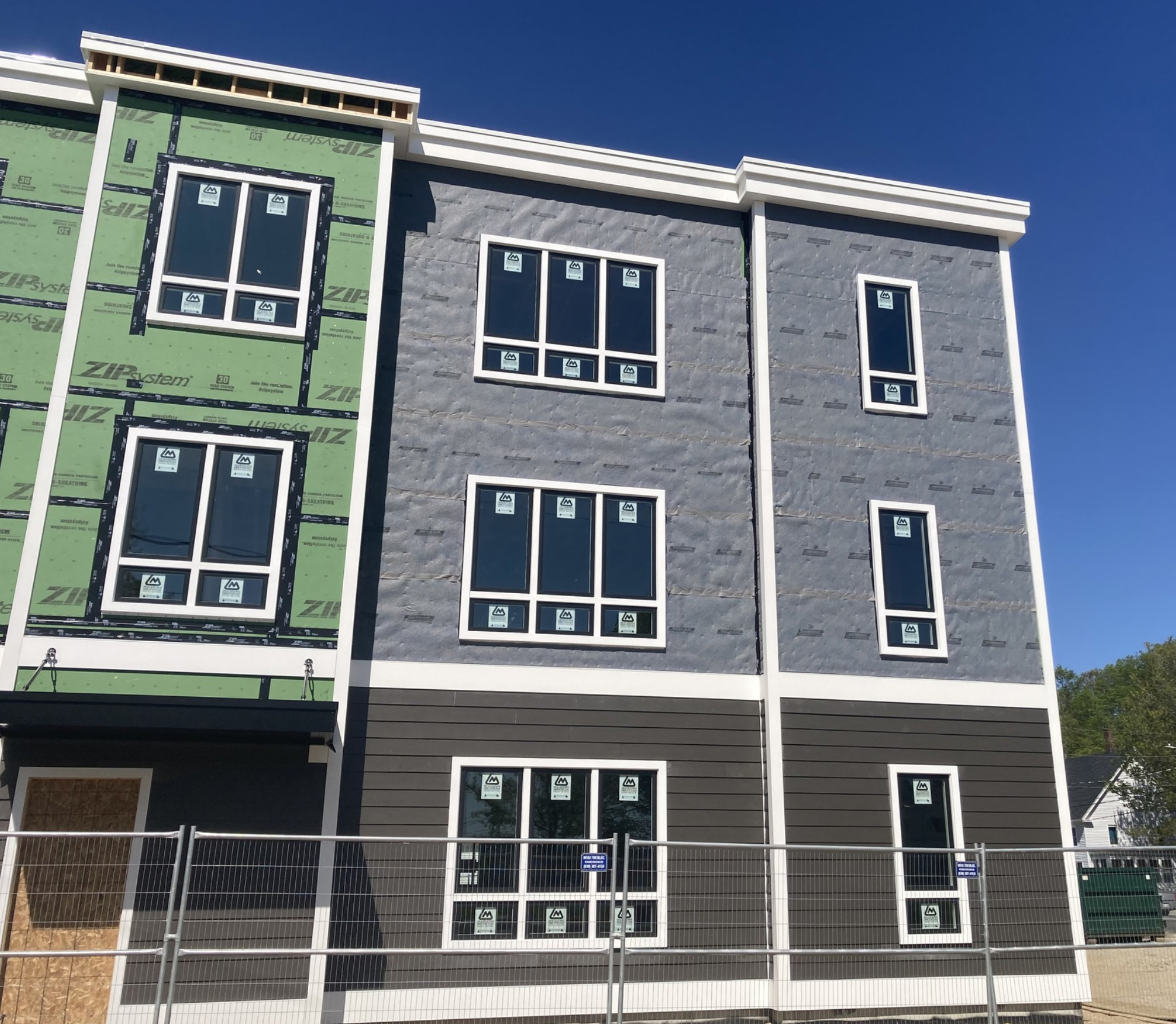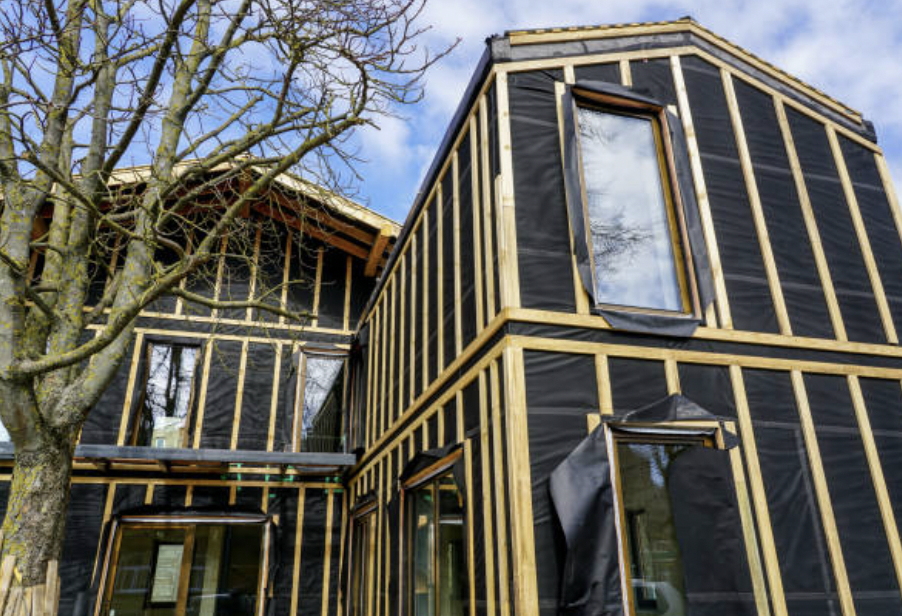Posted by Spycor Building on Jun 13th 2025

Rainscreen cladding is transforming modern home construction by offering a robust solution to protect homes from moisture damage, boost energy efficiency, and enhance aesthetic appeal. As homeowners increasingly demand durable, sustainable, and visually appealing residences, rainscreen cladding has emerged as a critical component for residential rainscreen systems. This innovative wall assembly technique addresses common challenges like water infiltration and mold growth, making it a must-have for home builders aiming to deliver high-quality, long-lasting homes. In this comprehensive guide, we explore why rainscreen cladding for modern homes is essential, its key benefits for builders and homeowners, and how to choose the right system for your next project. If you’re a home builder searching for the best rainscreen cladding for modern homes, read on to discover how this technology can elevate your construction projects.
Understanding Rainscreen Cladding: A
Game-Changer for Modern Homes

Rainscreen cladding is a wall system that combines an exterior cladding material (such as wood, stucco, brick, or fiber cement) with a ventilated air gap and a water-resistive barrier (WRB). This design creates a moisture management rainscreen that allows water to drain away from the structural wall while promoting airflow to dry any residual moisture. Unlike traditional siding, which can trap water and lead to rot or mold, ventilated rainscreen systems ensure the building envelope remains dry and protected. For home builders, this technology is a game-changer because it mitigates risks associated with water damage, a leading cause of costly repairs and homeowner complaints. By incorporating rainscreen systems for home builders, you can construct homes that withstand diverse climates, from rainy coastal areas to humid southern regions, while meeting modern building standards.
The rise of rainscreen cladding for modern homes aligns with evolving homeowner expectations. Today’s buyers prioritize homes that are durable, energy-efficient, and low-maintenance, and rainscreen systems deliver on all fronts. Whether you’re building a single-family home, a townhouse, or a multi-unit residential project, residential rainscreen solutions provide the durability and performance needed to stand out in a competitive market. Additionally, rainscreen cladding supports a wide range of aesthetic styles, making it ideal for contemporary designs that emphasize sleek lines, mixed materials, and sustainable construction.
Top 5 Benefits of Rainscreen Cladding for
Home Builders
1. Unmatched Moisture Protection
Moisture infiltration is a primary concern for home builders, as it can lead to mold, wood rot, and structural damage. Rainscreen cladding excels at moisture management for residential homes by creating a drainage plane that channels water away from the structural wall. The ventilated air gap allows any moisture that penetrates the cladding to dry quickly, preventing long-term damage. This is particularly important in regions with heavy rainfall or high humidity, where traditional siding may fail to protect the home. By using best rainscreen cladding for modern homes, builders can deliver homes that resist water-related issues, ensuring homeowner satisfaction and reducing callback costs.
2. Improved Energy Efficiency
Energy efficiency is a top priority for modern homeowners, who want to reduce utility bills and environmental impact. Ventilated rainscreen systems enhance insulation performance by keeping the wall assembly dry, which preserves the R-value of insulation materials. The air gap also reduces thermal bridging, helping homes stay cooler in summer and warmer in winter. This makes rainscreen systems for home builders a smart choice for meeting energy codes and appealing to eco-conscious buyers. By integrating rainscreen cladding, builders can create homes that are both comfortable and cost-effective to maintain, adding value to their projects.
3. Enhanced Fire Safety and Code Compliance
Fire safety is increasingly critical in residential construction, especially in urban areas or regions prone to wildfires. Non-combustible rainscreen systems offer a solution by meeting stringent building codes for fire resistance. These systems are designed to prevent fire spread, providing peace of mind for builders and homeowners alike. For example, rainscreen products with Class A fire ratings are ideal for multi-story homes or developments in high-risk areas. By choosing rainscreen cladding, builders ensure compliance with local regulations while enhancing the safety of modern homes, a key selling point in today’s market.
4. Aesthetic Flexibility for Modern Designs
Modern homebuyers demand exteriors that are both functional and visually striking. Rainscreen cladding for modern homes supports a wide range of siding materials, including wood, fiber cement, stucco, brick, and stone, allowing builders to create customized facades that align with contemporary trends. Whether it’s a minimalist design with clean lines or a rustic aesthetic with stone cladding, rainscreen systems provide the flexibility to achieve any look. This versatility makes residential rainscreen solutions ideal for builders aiming to differentiate their homes in a competitive market, from urban townhouses to suburban estates.
5. Long-Term Cost Savings
While rainscreen installation may involve a higher upfront cost than traditional siding, it delivers significant savings over time by preventing water damage, reducing maintenance, and improving energy efficiency. Cost-effective rainscreen systems for home builders minimize the need for repairs caused by mold or rot, saving homeowners thousands in potential costs. Additionally, the durability of rainscreen systems ensures that homes maintain their value and appeal for years, making them a smart investment for builders and buyers alike. By prioritizing best rainscreen systems for residential construction, builders can enhance the marketability of their homes.
Choosing the Right Rainscreen System for
Your Home Building Project
Selecting the best rainscreen cladding for modern homes depends on several factors, including climate, cladding type, budget, and building codes. Here’s how to make the right choice:
-
Climate Considerations: In wet or humid regions, prioritize ventilated rainscreen systems with robust drainage and drying capabilities. These systems excel in areas like the Pacific Northwest or the Southeast, where moisture is a constant challenge.
-
Cladding Compatibility: Choose a rainscreen system that matches your siding material. For stucco or stone, opt for products designed for absorptive claddings. For wood or fiber cement, select systems with versatile installation options.
-
Budget Constraints: For cost-conscious projects, look for cost-effective rainscreen systems for home builders that balance affordability and performance. Lightweight, easy-to-install systems can reduce labor costs without compromising quality.
-
Building Codes: Ensure your rainscreen system meets local regulations, especially in urban areas where fire safety is a concern. Non-combustible rainscreen options are critical for compliance in high-rise or high-risk zones.
By carefully evaluating these factors, builders can select a rainscreen system that meets both project requirements and homeowner expectations.
Step-by-Step Guide to Rainscreen
Installation for Residential Homes
Proper installation is key to maximizing the benefits of rainscreen cladding. Here’s a step-by-step guide for home builders:
-
Prepare the Wall Surface: Start with a clean, dry structural wall. Install a high-quality water-resistive barrier (WRB) to provide a baseline moisture barrier. Seal all penetrations (e.g., windows, pipes) to prevent leaks.
-
Install the Rainscreen System: Roll out the rainscreen membrane or mesh, securing it with corrosion-resistant fasteners. Ensure seams overlap properly (e.g., 6 inches for membranes, 2 inches for mesh) to maintain a continuous drainage plane.
-
Add Exterior Cladding: Install your chosen siding material (e.g., wood, stucco, brick) over the rainscreen, ensuring the ventilation cavity remains unobstructed. For absorptive claddings like stucco, use systems with built-in mortar screens to prevent clogging.
-
Inspect and Test: Check for gaps, misalignments, or blockages in the ventilation cavity. If required by local codes, test the system under simulated rain conditions to verify drainage performance.
Proper installation ensures that rainscreen cladding for modern homes delivers optimal moisture protection and durability. For detailed manufacturer guidelines, consult with your supplier to ensure compliance.
Rainscreen Cladding and Modern Home
Trends
Modern homebuyers are drawn to designs that combine aesthetics, sustainability, and low maintenance, and rainscreen cladding aligns perfectly with these trends. Architectural styles like minimalist, Scandinavian, or industrial-inspired homes benefit from the clean lines and mixed-material facades that rainscreen systems support. Additionally, the sustainability of residential rainscreen systems appeals to eco-conscious buyers, as many products qualify for LEED credits due to recycled content or energy-saving benefits. By incorporating best rainscreen systems for residential construction, builders can create homes that stand out in a crowded market, attracting buyers who value both style and substance.
Addressing Common Concerns About Raisncreen Cladding
Some builders hesitate to adopt rainscreen cladding due to concerns about cost or complexity. However, the long-term benefits far outweigh the initial investment. For example, the cost of a rainscreen system is offset by reduced maintenance and energy savings, making it a cost-effective choice over time. Additionally, modern rainscreen products are designed for easy installation, minimizing labor costs and project timelines. By choosing cost-effective rainscreen systems for home builders, you can deliver high-quality homes without breaking the budget. Furthermore, rainscreen systems are compatible with a wide range of claddings, ensuring flexibility for any project.
How Rainscreen Cladding Enhances Homeowner Satisfaction
Homeowners benefit directly from rainscreen cladding for modern homes, which translates to higher satisfaction and fewer callbacks for builders. The moisture protection provided by moisture management rainscreen systems prevents issues like mold and rot, which can lead to health concerns and costly repairs. Energy efficiency reduces utility bills, while the durability of rainscreen systems ensures that homes maintain their value over time. Additionally, the aesthetic versatility of residential rainscreen solutions allows homeowners to enjoy customized exteriors that reflect their personal style. By prioritizing rainscreen cladding, builders can deliver homes that exceed expectations and build a reputation for quality.

FAQ: Rainscreen Cladding for Modern
Homes
What is rainscreen cladding, and how does it work?
Rainscreen cladding is a wall system that includes an exterior cladding, a ventilated air gap, and a water-resistive barrier. The air gap allows water to drain and promotes drying through airflow, protecting the home from moisture damage. This makes it ideal for residential rainscreen applications in modern homes.
Why is rainscreen cladding important for home builders?
Rainscreen cladding for modern homes protects against water damage, improves energy efficiency, ensures fire safety, and supports diverse cladding options. It reduces maintenance costs and meets building codes, making it a smart choice for home builders aiming to deliver durable, high-quality homes.
How does rainscreen cladding improve energy efficiency?
Ventilated rainscreen systems keep the wall assembly dry, preserving insulation performance and reducing thermal bridging. This lowers heating and cooling costs, making homes more energy-efficient and appealing to eco-conscious homeowners.
What types of cladding work with rainscreen systems?
Rainscreen systems for home builders are compatible with wood, stucco, brick, stone, and fiber cement siding. Specialized products, like those designed for stucco and stone, ensure proper drainage for absorptive claddings, enhancing durability and aesthetics.
Are rainscreen systems cost-effective for residential construction?
Yes, cost-effective rainscreen systems for home builders reduce long-term maintenance and energy costs by preventing water damage and improving insulation. While the upfront cost may be higher, the savings and durability make it a worthwhile investment.
How difficult is rainscreen installation for residential homes?
Rainscreen installation for residential homes is straightforward with modern products designed for ease of use. Lightweight materials and clear manufacturer guidelines simplify the process, reducing labor costs and project timelines.
Conclusion: Build Better Homes with
Rainscreen Cladding
Rainscreen cladding for modern homes is a must-have for home builders aiming to deliver durable, energy-efficient, and visually appealing residences. By protecting against moisture, enhancing energy performance, ensuring fire safety, and supporting modern design trends, residential rainscreen systems elevate the quality and value of your projects.
CLICK HERE to order the best rainscreen based on your building project at spycorbuilding.com/moisture-management/rainscreen/ and start building homes that stand the test of time.


